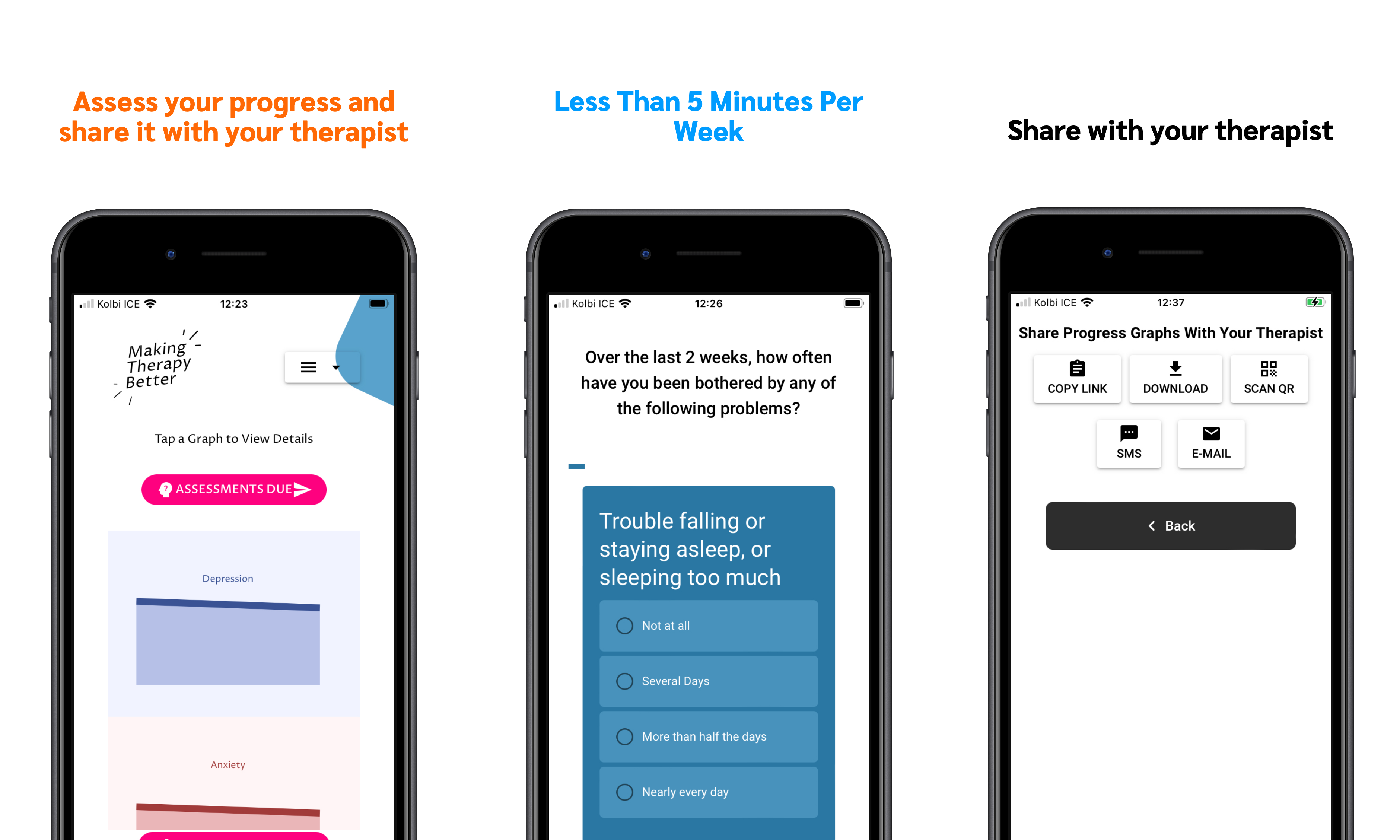Using Measurement-based Care (MBC) to Make Clinical Decisions

Description
As we have discussed, MBC provides information. In the last blog, I discussed how sharing the MBC information with the patient is beneficial to therapy. That discussion, although absolutely necessary in most cases, is a first step to improving therapy. The second step involves using the MBC information to make clinical decisions and to guide therapy. In this way, the information is integrated with your knowledge about the client to make effective clinical decisions about the course of treatment, the treatment delivered, how you relate to the patient, and the myriad other elements that compose the complexity of psychotherapy.
The information about MBC is useful to a panoply of decisions:
- How to respond in the moment in critical interactions
- Whether termination is warranted
- To focus on symptom reduction or well-being or loneliness
- To consider whether the alliance is sufficient to do difficult work
- To consider whether referral to another therapist is desirable
- Whether or not to focus on motivation for change (i.e., stage of change)
- Whether to change the focus of therapy
- And MANY others
I will illustrate how information from MBC can help the therapist consider various decisions with four cases using the CarePaths Measurement-Based Care system. For each case, I will (1) summarize the information, (d) make a conjecture about the case (i.e., interpreting the information), and (c) consider various decisions that could be made. Keep in mind that as a therapist, you will know more about the case than I present here.
Case 1

Summary of information
The patient has attended five weekly sessions. Symptoms of depression and anxiety, which began in the clinical range, have decreased and now have been in the normal range for the most recent two weeks. Well-being is improving and loneliness is decreasing as well. The patient reports having high levels of confidence in the therapist and in the treatment being offered.
Conjectures about therapy
Clearly, the patient has responded well to the treatment, as symptoms have decreased, well-being has improved, and the patient is less lonely. As well, she feels cared for and understood by the therapist and that the therapist was focused on helping the patient. Moreover, the patient is confident that what is happening in therapy (i.e., the treatment) will be and has been beneficial, if she does the difficult work of therapy.
Actions and decisions
Most importantly, the therapist needs to discuss the progress of therapy with the patients. Quite often, patients do not recognize the progress they have made (and often therapists do not either!). Here, it is absolutely vital that the therapist emphasize that progress is due to her hard work (i.e. internal attribution) and not due to external factors, such as the skill or charisma of the therapist or psychotropic medications. (There is strong evidence that attribution of progress to one’s own hard work reduces the rate of relapse). And, if the patient has achieved reasonable goals, it is appropriate to discuss and plan termination. There are many other patients who want and need the services of this therapist.
Case 2

Summary of information
This patient, who has attended 12 sessions, had experienced a significant decrease in symptoms of anxiety and depression. As well, loneliness has decreased but he has not experienced much change in well-being, which is a reminder that absence of symptoms does not necessarily indicate the patient is experiencing a more satisfying and rewarding life. This patient experiences the therapist as helpful and caring and believes the treatment will be effective.
Conjectures about therapy
The primary point to keep in mind for this case is that all indicators suggest therapy is successful, with the exception of well-being.
Action and decisions
A primary task is to ensure that the patient recognizes her progress and attributes it to his hard work in therapy. It is also important to discuss the patient’s well-being, values, and meaning in life. The therapist and patient might consider termination, referral to other services, or some form of meaningful activities, given his values.
Case 3

Summary of information
The patient has attended four sessions over the course of seven weeks, having missed regularly scheduled sessions. Symptoms are not improving, although there is some improvement in well-being. Patient does not experience the therapist as caring or understanding nor does she believe the treatment will be beneficial.
Conjectures about therapy
Clearly, the patient is not engaged in therapy and collaborative efforts are not succeeding. Perhaps the patient was mandated or influenced to attend therapy, without intrinsic motivation to change—the patient likely is at a pre-contemplative stage of change. However, the progress may indicate that the therapist has not persuasively convinced the patient that therapy will be helpful. As well, cultural issues might be creating mistrust.
Actions and decisions
The therapist might need to consider motivational strategies rather than a focus on treatment actions and change. Perhaps psychotherapy is not indicated for this patient at this point in time. As well, the therapist should consider their skills with this patient and perhaps their attitude toward this patient, the culture of the patient, and a number of other therapist considerations with this particular patient.
Case 4

Summary of information
This patient has attended therapy regularly (8 sessions) and reports that he feels understood and cared for. However, symptoms have not been significantly improving. Feeling of loneliness have been decreasing but well-being has not improved. The patient is not confident that the treatment will be beneficial, but they nevertheless attend sessions regularly.
Conjectures about therapy
It seems that the patient is not working toward goals, if they are established, and that therapy is not focused on patient progress. The therapist in this case is a source of comfort and social support. The patient feels like he has a “friend” who cares for him, listens to his problems, and is there for him every week, in an empathic way.
Actions and decisions
The therapist and patient might well discuss progress of therapy and the purpose of therapy. Explore motivation for change. As well, perhaps a more structured and symptom focused therapy would be more appropriate for this patient. The therapist might examine their work with this particular patient and similar patients to determine if expanding their skill set could benefit such patients.
Conclusions
Psychotherapy is a complex endeavor. As in most pursuits, the more information, the better! As long as measurement-based care information is not overwhelming and is integrated into what the therapist knows about the patient using their clinical judgment, the information can help understand and guide treatment.






